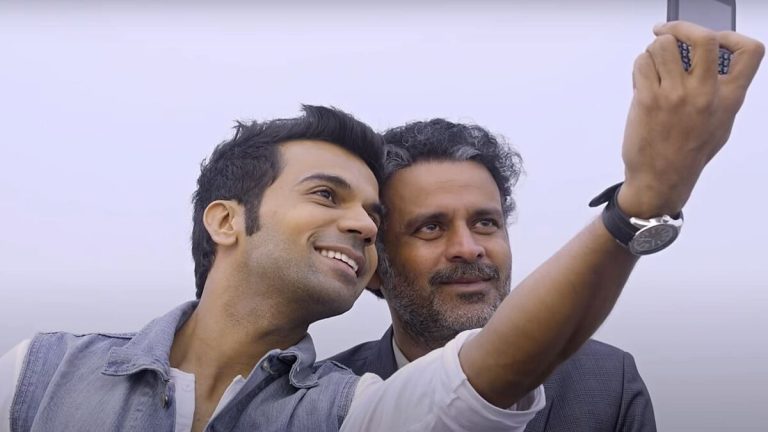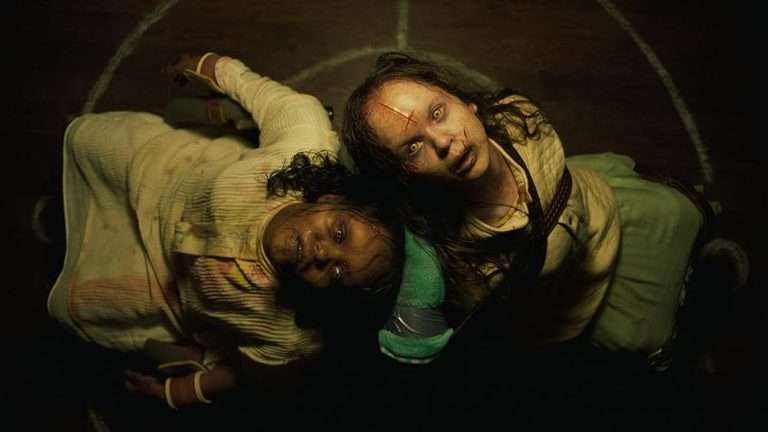Disclaimer: The film has been adapted from the Braj language epic poem Prithviraj Raso, the oldest extant recension of which dates back to the early seventeenth century and is believed to have been written sometime in the late sixteenth century under the patronage of Rajput rulers, with some portions derived from the thirteenth century. The historicity of the poem has been rejected, and a consensus was achieved on the same by the late nineteenth century. In the light of these facts, it has to be noted that the film Samrat Prithviraj is entirely a fictional account. The following review will not analyze the film in terms of historical authenticity. If the reader(s) feel uncomfortable with rejecting the poem’s validity as a historical text, they are encouraged to do secondary research.
When we watch a film, we are attracted by the humans telling a story. The humans in the frame serve as proxies for the humans behind it. Essential human elements also weave the greatest of all spectacles. For example, in S.S. Rajamouli’s epic action-drama RRR (2022), the grand design is staged on the vulnerable aspirations of its two protagonists, who move around each other in what resembles a harmonic motion in two different planes. They collide and grow apart and eventually converge. Their actions are synchronized, and their stories claim space to give context to their efforts. But Rajamouli is so much invested in his self-acquired responsibility of creating spectacles that humans become instruments of his storytelling pursuit. The clarity here is that Rajamouli tells a fictional account and never says otherwise. His agenda is as clear as a summer’s sky. The same quality of self-awareness and clarity is unavailable in Chandraprakash Dwivedi. In his retelling of Prithviraj Raso, Dwivedi finds himself obsessed with his protagonist to such an extent that his focus on the character’s exploits becomes disproportionate. Prithviraj III, or Prithviraj Chauhan, in his brief but eulogized life, must have lived through the years like us humans. There is no sequence in the film that attempts to humanize Prithviraj, which eventually leads to the creation of a prop aggravated by the terrible performance of Akshay Kumar.
What do I mean when I say no sequence humanizes Prithviraj in something that is overtly a fictional period drama? Samrat Prithviraj is not a coherent film but a set of disjoint narratives that move from one military stint to another and find a small space in between for Prithviraj’s marriage with Sanyogita, played by Manushi Chhillar. All military expeditions begin with a courtroom banter between the samantas (feudal lords or equivalents of knights) of Prithviraj, where they repeat their need to die on the battlefield. In moments of dire need or when a threat is looming, such dialogues land in all honesty, but when the bunch of characters keeps reiterating how much they wish to die and become a martyr while fighting, it starts to appear as some form of cult-induced illusion wherein blabber is considered a mark of bravery. This isn’t a fault of who the characters are, and I do not intend to question the bravery of a specific clan or set of people. It is just how the screenplay has been written. It fails to offer anything constructive and elaborate than the plot summary of the poem serving as source material. The screenplay moves in this manner: A happened, B happened, C happened due to A, and then D happened. No complexity is warranted, and no elaborate planning is required. The seemingly macro affairs that threaten the empire are converted to decisions in micro settings within minutes. It is the incompetence of the filmmaker as he fails to see how the three-act structure is damaged due to the shallow writing. The film opens with the final sequence, and the final sequence rehashes the opening sequence. The First Battle of Tarain is brief, and the briefer is the Second Battle of Tarain, both of which are considered the most important life events of the protagonist. Given how weakly composed they are, there are no satisfactory action sequences in the film. And hence, I fail to see a climax in the movie either in terms of experience.
Also, Read – KGF Chapter 2 [2022] Review – Prashanth Neel Goes For Broke To Mark Rocking Star Yash’s Return As Rocky
Dwivedi’s obsession is confirmed in his violations of the very text from which he adapts the film. The text focuses on Prithviraj’s love affair with Sanyogita, which diverted his attention as a ruler and eventually led to his weakening to the benefit of an invading Muhammad of Ghor. Dwivedi actively chooses not to show a love-struck and vulnerable king as that would damage the myth around the character. The affair portrayed in the film gives the nod to Dilwale Dulhania Le Jayenge in spirit, and the “Teri Ore” song from Singh is King in aesthetics. The reception of songs is always subjective, but there is something funny about Sanyogita and Prithviraj romancing in a desert in the backdrop of a song that is written in the modern Hindi language. Dwivedi is torn between his Brahminical instinct, his need to come across as a champion feminist liberal, and the obligations of Bollywood romance. Given where it’s due: Mimicking Bhansali’s sophistication in a Holi sequence, he provides a show of precisely choreographed dance sequences on an otherwise underwhelming song.
A moment of autofellatio for Samrat Prithviraj, the protagonist, becomes a moment of self-awareness for the film. When the identity of the court poet and Prithviraj’s friend Chand Bardai is questioned, Prithvi says, for there is Valmiki, there is Ram; for there is Vyas, there is Sri Krishna, and hence, for there is Chand Bardai, there is him. This essentially implies the fictionality of this film akin to all epic characters mentioned, and Prithviraj we see here is a figment of Chand Bardai’s imagination. But this Prithviraj is also a product of Dwivedi’s imagination.
If you have struggled to register Brahminical gaze in a film, you won’t struggle here. The director leaves no single opportunity to glorify or whitewash Hindu practices and thoughts. When he channelizes his feminist side, he presents the need to respect and protect women as a masculine duty. He wishes to criticize certain practices but also absolves his characters who are being glorified. To elaborate, in a sequence Kaka Kanha, played by Sanjay Dutt, starts to mention the practice of Sati; Prithviraj Chauhan stops him from speaking further in an ambiguous gesture of being disturbed by the idea of hearing about it. The same Prithviraj lectures about the need for women’s equality in politics, and so does Sanyogita. After that, in a baffling display of orthodoxy and without an ounce of self-awareness, Dwivedi composes a dance sequence with women singing a song titled “Yoddha Ban Gayi Mai” (I’ve become a warrior) upon learning about Prithviraj’s defeat in the Second Battle of Tarain following which they commit mass self-immolation. The problem doesn’t lie in the portrayal of events subject to the era but in the admiration they hold in the eyes of the filmmaker, who finds nobility in regression.
Committing to the practices of foreshadowing as previously done by the likes of Bhansali in Padmavat and Om Raut in Tanhaji, Dwivedi films Jayachand, the mythical traitor in the story played by Ashutosh Rana, in dim lighting. At the same time, Prithviraj gets saffron lit shots unless in mourning. The same is true with Muhammad of Ghor, played by Manav Vij. It is no longer enraging but stupid. The trope exists with such a frequency that it appears that all the Muslim antagonists dwell in the dark while the brave Hindus are out in the open, treading in ample light. Religious bigotry aside, films puncture due to this practice as treachery becomes a default feature of the antagonist, diluting their threat to the protagonist. The two sides become unequal by prejudice and compromise the entertainment audience can derive from their battle/conflict. The valor of the protagonist is then derived not from their ability to perform but from their ability to endure in suffocating circumstances where power dynamics are reversed.
The politics of color isn’t subtle anymore. While there is no doubt that the dominant color in Rajputana would be that of saffron and red, and in Ghurid Dynasty would be that of green, it is the absence of green in the former and the absence of saffron in the latter that must be noted. The Holi sequence in the film has only three colors, namely red, pink, and saffron, with saffron being in most abundance. They are just one film away from painting all the leaves saffron to eliminate anything green. The historical revisionism project concludes with an outrageous lie with its epilogue text prior to the credit crawl that says after a struggle of 755 years against foreign invaders and rulers, India became free in 1947. It says that the fall of Chauhan in 1192 CE brought an end to Hindu Samrajya (empire) in India. It keeps on boasting about a samrajya, calling Prithviraj Chauhan the ruler of Hindustan when no Hindustan existed, and Chauhan’s empire extended only marginally beyond the borders of contemporary Rajasthan. The idea injected here is critical. It passively implies that no Hindu ruler existed in the Indian subcontinent after Prithviraj Chauhan while exaggerating the latter’s claim on the subcontinent itself. Then it manages to homogenize all Indian rulers as invaders after Chauhan’s defeat. Allow me to divagate from my responsibility of reviewing this film to warn against its propagating lies that have no historical basis.
Samrat Prithviraj’s high point would be this one single dialogue in which Prithviraj Chauhan calls out to the minions of Muhammad Ghori Sultan ke tatton (testicles of Sultan), and in all honesty, this is the most believable moment of the entire film. After all, a war-torn tortured emperor shouldn’t be expected to be politically correct and censor his language. And this sequence alone earns the film half a star. I’m not too fond of propaganda, so naturally, the motive of the film and the form in which it exists trigger me. But even if I didn’t mind propaganda for entertainment, Samrat Prithviraj has nothing eyegasmic to offer unless watching the color saffron flowing aplenty before you has been your wet dream.










